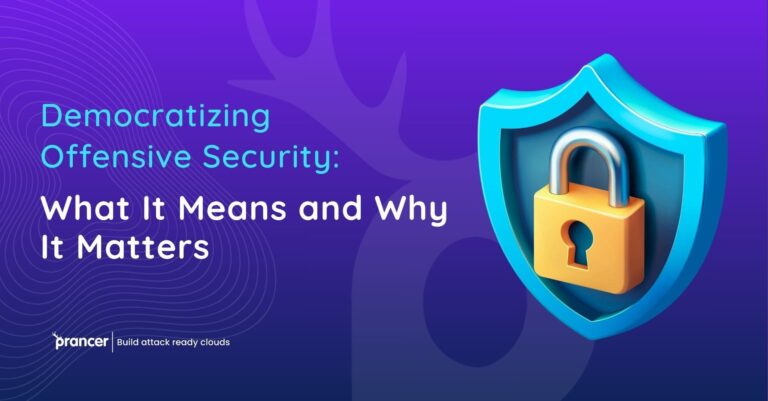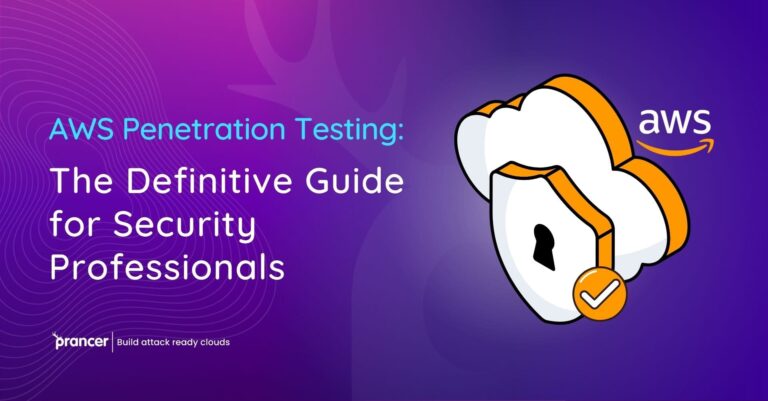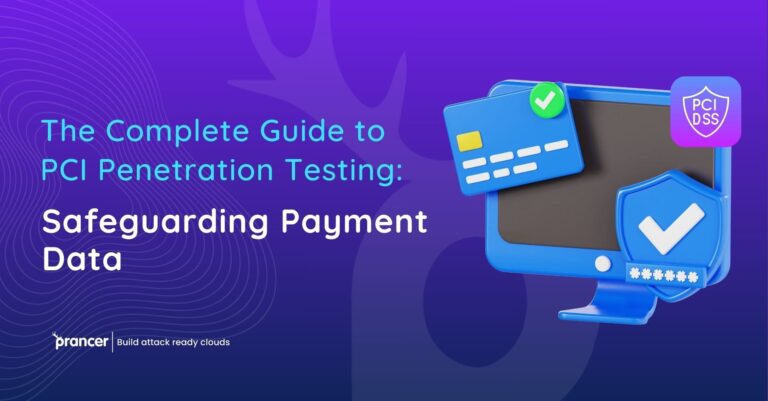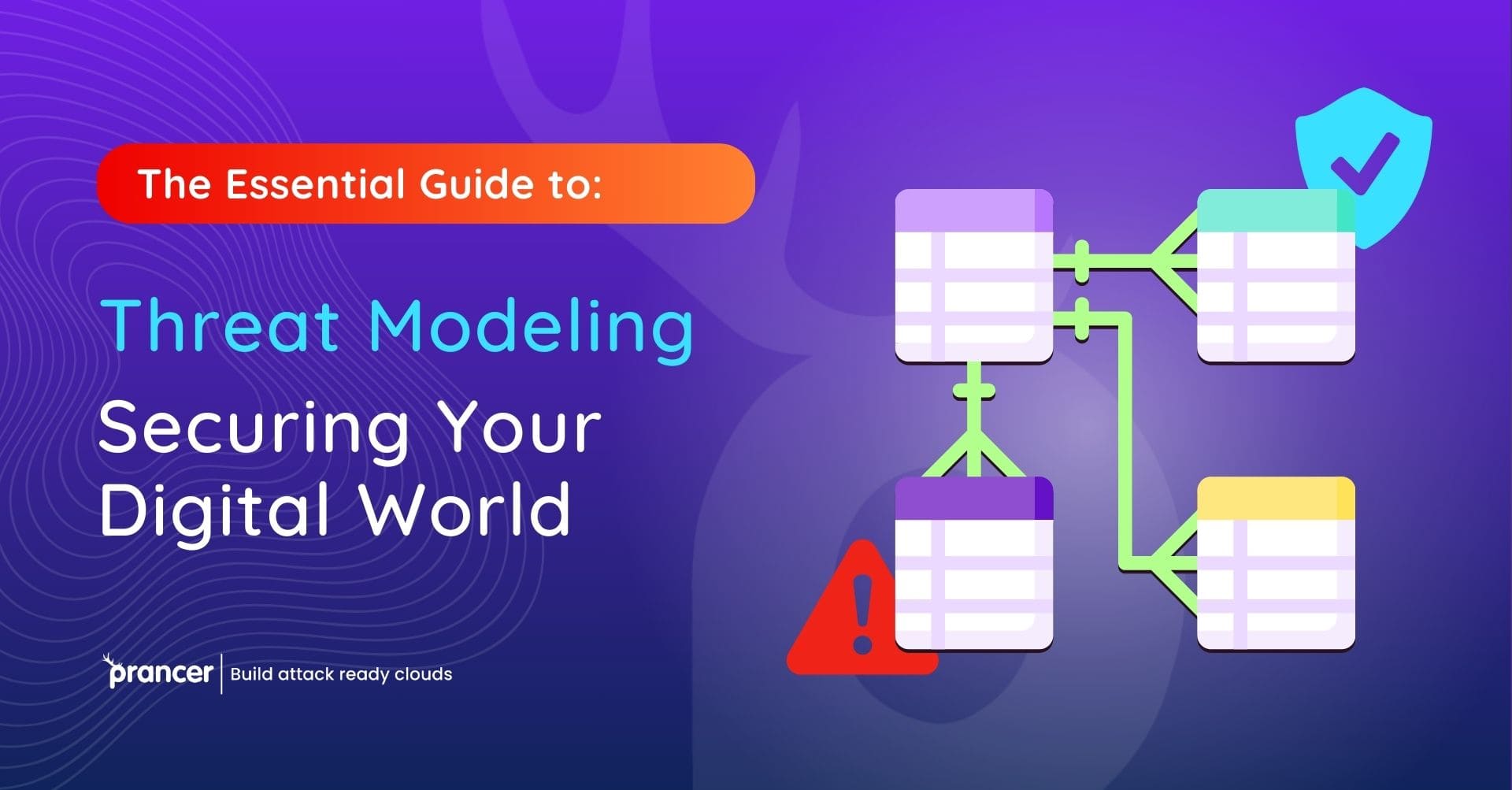In the current digital world, it is more important than ever to safeguard sensitive information. Whether you are a business owner, a cybersecurity professional, or a person concerned about your online safety, you need to know about threat modeling. But what is threat modeling and how does it apply to your digital security? In this article, we’ll look at threat modeling, how companies like Prancer can help and the value of automating penetration testing to keep systems protected.
In threat modeling we identify, assess, and address potential threats before they become real issues, just like preparing for a storm. Instead of physical rain or wind, these storms are cyber-attacks and having the right tools and strategies at your disposal will minimize the damage.
What is Threat Modeling?
The core of threat modeling is a structured way to identify and defeat possible security problems. The idea is to imagine what could break your system, and act before that happens. Whatever level of infrastructure you are managing, whether it is an enterprise level or small business website, it makes sense to understand what type of attack vectors can potentially hit it.
Threat modeling typically focuses on three key questions:
- What exactly are we trying to protect?
- But who are we protecting it from?
- How can we mitigate those threats?
By answering these questions, businesses can find weakness in their systems and prepare to be the best possible.
Threat Modeling Components
To effectively implement threat modeling, there are several critical components to consider:
- Assets: These are the things, the valuable resources, or data that need to be protected.
- Threats: Risks that may harm the assets.
- Vulnerabilities: Potential weak spots in the system which an attacker can exploit.
- Mitigation strategies: Actions taken to reduce, or eliminate the risk, of threats.
When we map these components out, businesses can better understand where their vulnerabilities are and how to deal with them.
Why do we need Threat Modeling?
The reason threat modeling is so important is because it allows businesses and individuals to outpace potential attackers one step. Whereas reacting to a breach after it occurs, threat modeling helps you anticipate weakness and address them before a breach occurs.
Imagine you’re locking your doors before someone kicks your door in. By anticipating risks, you are able to take preemptive steps that help keep your systems and data secure.
Common Cybersecurity Threats
There are many types of cybersecurity threats that businesses and individuals need to be aware of, including:
- Phishing attacks: Emails or websites that are designed to get you to give up sensitive information.
- Ransomware: Malicious software that locks user’s systems, until a ransom is paid.
- DDoS attacks: Loading a system with traffic to deny users access to the system.
- Data breaches: The unauthorized access to confidential information.
First, to build a strong defense against these common threats, it’s important to understand them.
Threat Modeling Methods
There are several different methods for performing threat modeling, each with its strengths:
- STRIDE: This attack model, which covers six key threat categories: Spoofing, Tampering, Repudiation, Information Disclosure, Denial of Service (DoS) and Elevation of Privilege, is used.
- DREAD: A method for ranking threats according to the damage they potentially cause, their reproducibility, exploitability, number of affected users and their discoverability.
- PASTA: Attack Simulation and Threat Analysis Process which focuses on threat alignment with business objectives.
All of these methods each have their own benefits, and the selection of the best choice depends upon the system or application to be analyzed.
Threat Modeling in Role of Prancer
Threat modeling is an incredibly important tool for organizations and businesses to better understand the risks within their systems, and Prancer is a fundamental tool to help with this. Automated penetration testing is a critical part of threat detection, and that’s where Prancer comes in. Penetration testing automated simulates cyber-attacks to detect vulnerabilities before real hackers do.
Prancer’s best in class security tools can be integrated into a threat modeling strategy to help companies have a better insight into potential risks and take preventive actions to protect their systems.
Want to build a stronger security strategy? Book a demo with Prancer today!
An Overview of Automated Penetration Testing and Why it is Important
With automated penetration testing, businesses get to simulate attacks on their system automatically instead of manually. It saves time and resources, and it guarantees more consistent and more comprehensive testing.
Penetration testing automation provides faster and more precise vulnerability identification and is an important element of any sound threat modelling strategy. With Prancer’s automated penetration testing services, businesses can simplify their security efforts and minimize breach risk.
Business Threat Modeling
Why is threat modeling a strategic requirement for businesses? For one, it’s not just a technical necessity. Trust and security are incredibly important in today’s competitive market. One data breach can tarnish a company’s reputation and lead to legal penalties that cost big.
The adoption of threat modeling by a company is a clear indication that it is willing to protect its client’s data, it reduces breaches chances and ensures compliance with the security regulations.
An approach to automated penetration testing implemented in Prancer
Automated penetration testing by Prancer takes a different approach to the same – it offers very highly scalable solutions. Whether you’re a small business or a large corporation, Prancer’s tools will work for the size of your infrastructure and infrastructure complexity and provide solutions that meet your exact needs.
On Effective Threat Modeling: Best Practices
To get the most out of threat modeling, it’s important to follow best practices:
- Start early: Threat modeling is an important factor to integrate in the design phase of projects.
- Involve all stakeholders: Make sure that everyone—the engineers, the business leaders—is part of the process.
- Regularly update your models: Potential threats evolve along with systems. Keep ahead with your models that are continuously updated.
- Automate where possible: Automate tools like Prancer’s to streamline testing, and to cover everything.
The Future of Threat Modeling
Cybersecurity threats are constantly changing and so are the tools we need to fight them. More advanced automation, artificial intelligence, and real time threat detection systems are likely to be part of the future of threat modeling.
Conclusion
As the world becomes more digital, businesses and people need to understand and implement threat modeling. If you’re able to identify potential risks and take action to mitigate those risks, your systems and data will be safe. In fact, companies such as Prancer are pioneering the use of automated penetration testing services which make staying secure easier than ever.




